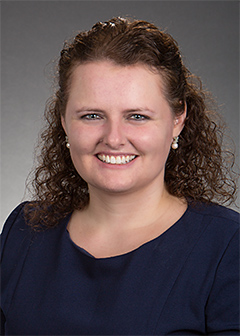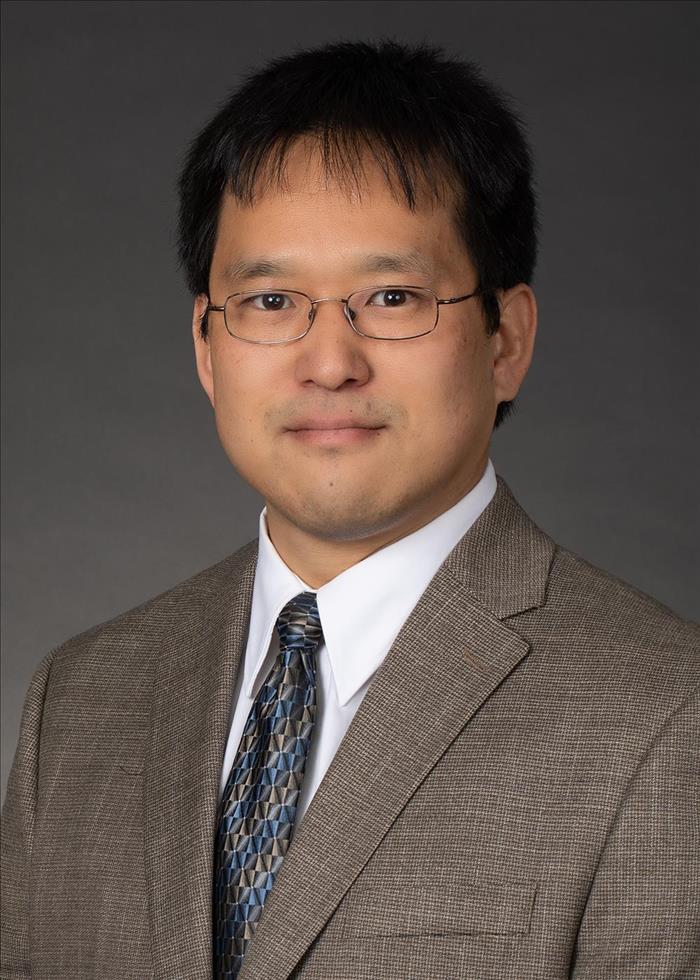Kunduk Lab
The research mission of the Voice Center and the LSU-COMD Laryngeal Imaging Laboratory, led by Dr. Melda Kunduk, is to further the assessment and treatment of voice, upper airway, and swallowing disorders in clinical practice. A primary goal of our multidisciplinary research team is to find ways to bring reliable objective quantitative measures to clinical practice.
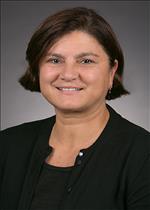
Melda Kunduk
Ph.D, CCC-SLP
Dr. Kunduk, who joined Louisiana State University- Department of Communication Sciences and Disorders (LSU-COMD) in Baton Rouge in 2006, is an adjunct Professor of the Department of Otolaryngology - Head & Neck Surgery at the LSU Health Sciences Center and The Our Lady of The Lake Regional Medical Center -Voice Center. She teaches the graduate courses on voice and resonance disorders, dysphagia, cleft palate and a graduate-level seminar in the area of voice and swallowing disorders. She is the Director of the Laryngeal Imaging Research Laboratory, which is located within the Department.
Her research focus is to further the assessment and treatment techniques of voice and swallowing disorders in clinical practice. In the area of voice, she investigates the vocal fold vibratory function using High-Speed Digital Videoendoscopy (HSV) in normal and disordered voices. The HSV allows objective quantification of current endoscopic voice parameters and has the potential to introduce new ones to advance the study of vocal function. In the area of dysphagia, she investigates the effects of behavioral treatment on swallowing function following head and neck cancer treatment modalities. She is also interested in developing clinician and/or patient-friendly analyses and therapeutic tools in order to aid the assessments and treatment of voice and swallowing disorders. She and her colleagues at LSU developed the “ Voice Volume Monitor Device”. The purpose of the Voice Volume Monitor is to enable patients to regulate their vocal intensity in an unobtrusive manner. To achieve her research goals, Dr. Kunduk established a multidisciplinary research team consisting of experts within and outside the discipline of Communication Sciences and Disorders. Her research team includes local and international collaborators, who have backgrounds in Mechanical Engineering, Electrical Engineering, Computer Sciences, and Medicine (Otolaryngology-Head and Neck Surgery and Laryngology).
Kunduk Lab Research Team
Kunduk Lab Research Highlights
High speed videoendoscopy (HSV) technology promises to be a significant clinical tool in the assessment of true vocal fold vibratory function in both health and disease. Investigation is ongoing to aid in understanding endoscopic vocal fold vibratory measures and their relationship to perceived voice quality and vocal function. Current endoscopic measures are based on videostroboscopy which is good for normal voices but limited in disordered voices. HSV imaging techniques address these limitations with significantly improved temporal resolution allowing for observation and quantification of irregular and disordered vocal fold vibratory patterns.
Selected Publications
- Gomez P, Kist AM, Schlegel P, Berry DA, Kniesburges., Kunduk M, Maryn Y, Schutzenberger A, Verguts M, Doellinger M. BAGLS, a multihospital Benchmark for Automatic Glottis Segmentation. ScientificDatahttps://doi.org/10.1038/s41597-020-0526 www.nature.com/scientificdata
- Schlegel P, Kunduk M, Stingl M, Semmler M, Döllinger M, Bohr C, Schützenberger A. Influence of spatial camera resolution in high-speed videoendoscopy on laryngeal parameters. PLoSONE, 2019. 14(4): e0215168. https://doi.org/10.137.journal.pone.0215168
- Samlan RA, Kunduk M, Ikuma T, Black M, Lane C. Vocal fold vibration in older adults with and without age-related dysphonia. Am J Speech Lang Pathol. 2018;27(3):1039-1050. doi:10.1044/2018_AJSLP-17-0061
- Schlegel P, Semmler M, Kunduk M, Döllinger M, Bohr C, Schützenberger A. Influence of analyzed sequence length on parameters in laryngeal high-speed videoendoscopy. Applied Sciences. 2018;8(12). doi:10.3390/app8122666
- Kunduk M, Vansant MB, Ikuma T, McWhorter A. The effects of the menstrual cycle on vibratory characteristics of the vocal folds investigated with high-speed digital imaging. J Voice. 2017;31(2):182-187. doi:10.1016/j.jvoice.2016.08.001
- Kunduk M, Ikuma T, Blouin DC, McWhorter AJ. Effects of volume, pitch, and phonation type on oscillation initiation and termination phases investigated with high-speed videoendoscopy. J Voice. 2017;31(3):313-322. doi:10.1016/j.jvoice.2016.08.016
- Ikuma T, Kunduk M, Fink D, McWhorter AJ. Synthetic multi-line kymographic analysis: A spatiotemporal data reduction technique for high-speed videoendoscopy. J Acoust Soc Am. 2016;140(4):2703-2713. doi:10.1121/1.4964400
- Ikuma T, Melda K, Fink D, McWhorter AJ. A spatiotemporal approach to the objective analysis of initiation and termination of vocal-fold oscillation with high-speed videoendoscopy. J Voice. 2016;30(6):756.e21-756.e30. doi:10.1016/j.jvoice.2015.09.007
- Samlan RA, Kunduk M, Ikuma T. Vocal fold vibration and voice quality in the elderly. J Acoust Soc Am. 2016;140(4):3443-3443. doi:10.1121/1.4971104
- Unger J, Hecker DJ, Kunduk M, Schuster M, Schick B, Lohscheller J. Quantifying spatiotemporal properties of vocal fold dynamics based on a multiscale analysis of phonovibrograms. Biomedical Engineering, IEEE Transactions on. 2014;61(9):2422-2433. doi:10.1109/TBME.2014.2318774
- Ikuma T, Kunduk M, McWhorter AJ. Advanced waveform decomposition for high-speed videoendoscopy analysis. J Voice. 2013;27(3):369-375. doi:10.1016/j.jvoice.2013.01.004
- Ikuma T, Kunduk M, McWhorter AJ. Preprocessing techniques for high-speed videoendoscopy analysis. J Voice. 2013;27(4):500-505. doi:10.1016/j.jvoice.2013.01.014
- Chen J, Gunturk BK, Kunduk M. Glottis segmentation using dynamic programming. Proc. SPIE 8669, Medical Imaging 2013: Image Processing; 2013:86693L. doi:10.1117/12.2006699
- Ikuma T, Kunduk M, McWhorter AJ. Mitigation of temporal aliasing via harmonic modeling of laryngeal waveforms in high-speed videoendoscopy. J Acoust Soc Am. 2012;132(3):1636-1645. doi:10.1121/1.4742730
- Döllinger M, Kunduk M, Kaltenbacher M, et al. Analysis of vocal fold function from acoustic data simultaneously recorded with high-speed endoscopy. J Voice. 2012;26(6):726-733. doi:10.1016/j.jvoice.2012.02.001
- Kunduk M, Döllinger M, McWhorter AJ, Lohscheller J. Assessment of the variability of vocal fold dynamics within and between recordings with high-speed imaging and by phonovibrogram. Laryngoscope. 2010;120(5):981-987. doi:10.1002/lary.20832
- Döllinger M, Lohscheller J, McWhorter A, Kunduk M. Variability of normal vocal fold dynamics for different vocal loading in one healthy subject investigated by phonovibrograms. J Voice. 2009;23(2):175-181. doi:10.1016/j.jvoice.2007.09.008
- Ziethe A, Patel R, Kunduk M, Eysholdt U, Graf S. Clinical analysis methods of voice disorders. Current Bioinformatics. 2011;6(3):270-285. doi:10.2174/157489311796904682
- Lohscheller J, Döllinger M, McWhorter AJ, Kunduk M. Preliminary study on the quantitative analysis of vocal loading effects on vocal fold dynamics using phonovibrograms. Ann Otol Rhinol Laryngol. 2008;117(7):484-493.
- Kunduk M, Yan Y, McWhorter AJ, Bless D. Investigation of voice initiation and voice offset characteristics with high-speed digital imaging. Logop Phoniatr Voco. 2006;31(3):139-144. doi:10.1080/14015430500364065
- Yan Y, Ahmad K, Kunduk M, Bless D. Analysis of vocal-fold vibrations from high-speed laryngeal images using a hilbert transform-based methodology. J Voice. 2005;19(2):161-175. doi:10.1016/j.jvoice.2004.04.006
Dr. Kunduk's Articles at the Journal of Voice
Dynamic Quantitative Analysis of Pathological Voice Signals
Currently, mainstream quantitative voice measures assume that the characteristics of recorded voice are fixed during the analysis time frame. This assumption only holds for normal phonation in healthy voices. Voice disorders often cause the voice quality to change, sometimes drastically and allowing for these changes during analysis helps better quantify objective measures of pathological voice.
Swallowing Disorders and their Treatment in Head and Neck Cancer
Head and neck cancer and its treatment frequently adversely affects swallowing function. Our research team is working to improve swallowing function in patients with head and neck cancer. We employ behavioral treatment protocols with varying intensity and frequency to minimize treatment toxicity and maximize the maintenance of safe swallowing. Using these techniques, we have shown a 50 % reduction in feeding tube dependence. We continue to work on strategies to maximize these benefits with studies underway to determine the significance of the objective timing and displacement measures of swallowing and diet outcomes.
Selected Publications
- Vansant M*, Parker L, Blouin D, McWhorter AJ, Kunduk M. Predicting Swallowing Outcomes from Objective Videofluoroscopic Timing and Displacement Measures in Head and Neck Cancer Patients. Dysphagia. 2020 Oct;35(5):853-863.doi: 10.1007/s00455-020-10091-5. Epub 2020 Feb 11.
- Virani A*. Kunduk M., Fink D, McWhorter AJ. Effects of Two Different Swallowing Exercise Regimens During Organ-Preservation Therapies for Head and Neck Cancers on Swallowing Function. Head Neck. 2015 Feb; 37(2):162-70. doi: 10.1002/hed.23570.
Read More at the National Library of Medicine
Kunduk Lab Research Photos
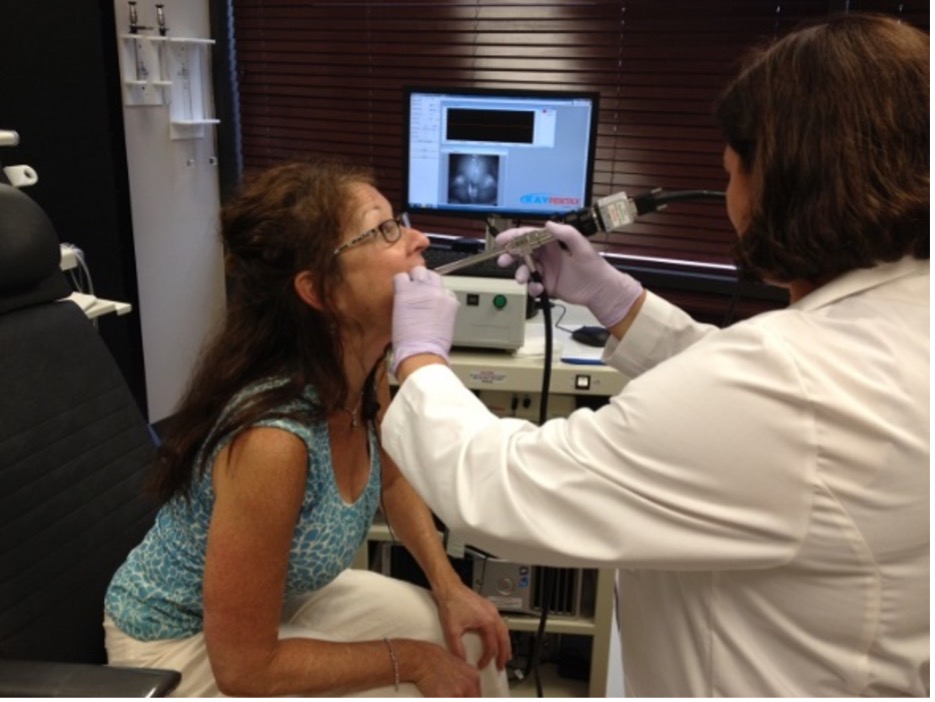
High Speed Videoendoscopy
Dr. Kunduk performing high speed videoendoscopy on a patient.
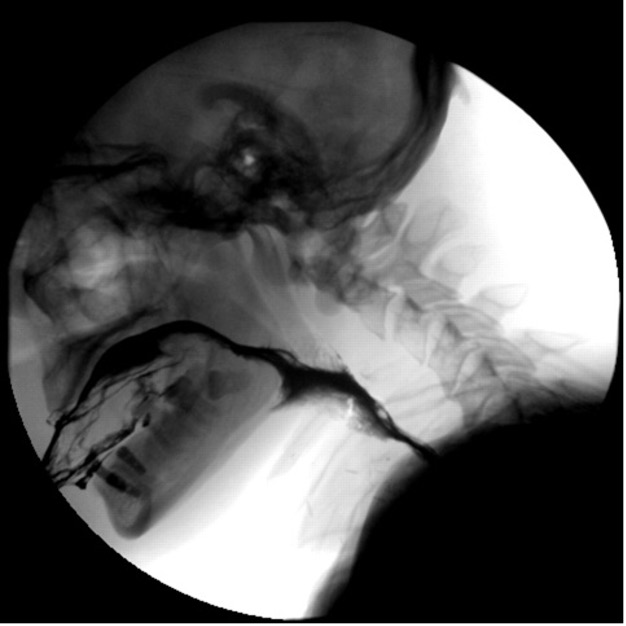 |
Head and Neck Cancer PatientFrom Dr. Kunduk's research involving swallowing disorders in Head and Neck Cancer patients. |

